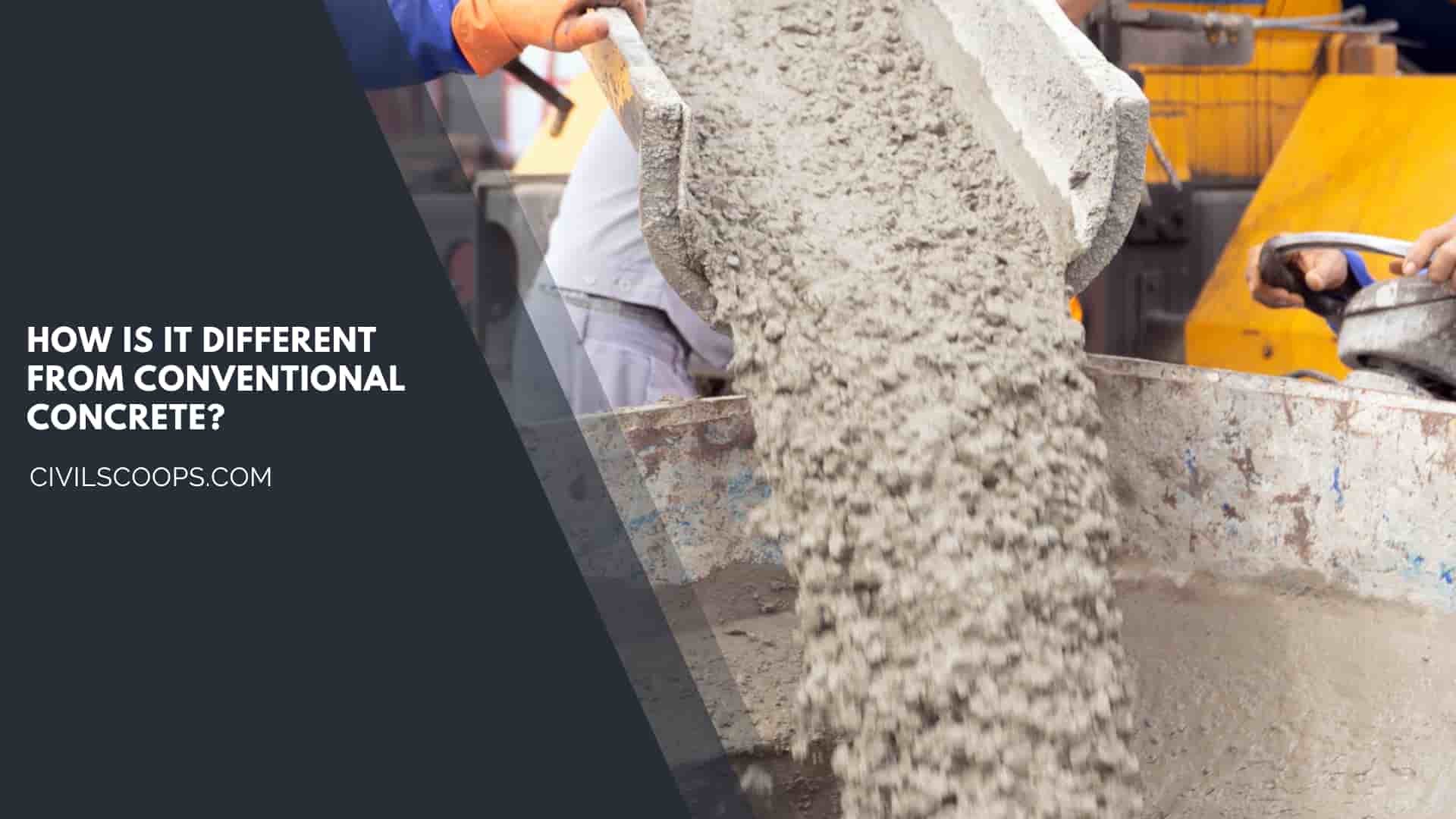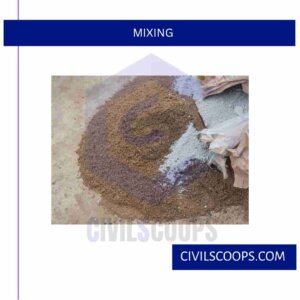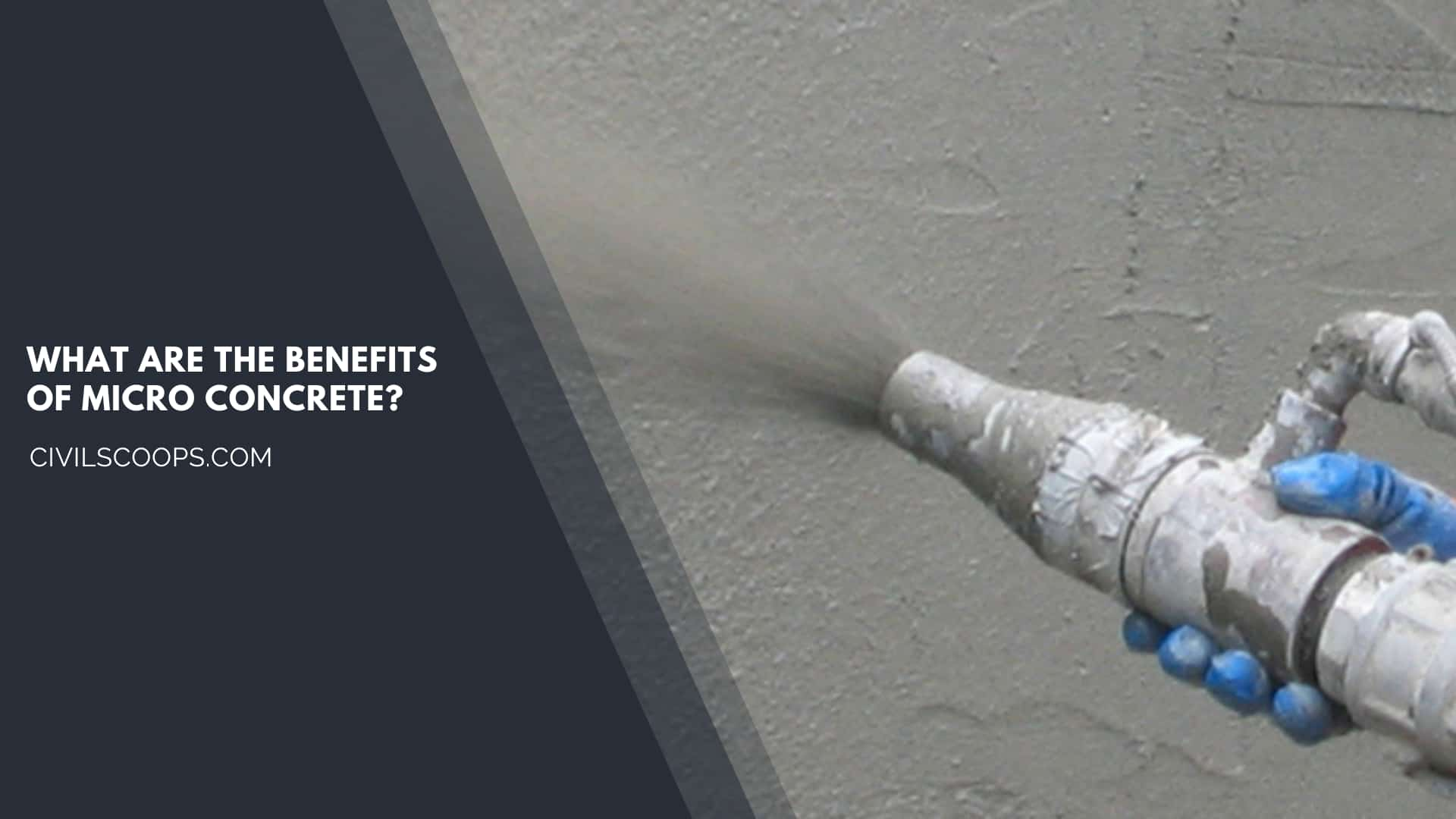
Table of Contents
What Is Micro Concrete?

Micro concrete is a cement-based coating that is used as a thin layer on different surfaces like tiles, wood, etc to give a look and feel of real concrete at less cost. The layer of micro concrete is about 2-3mm thick.
It is a non-shrink and flowable material that only requires water to produce high-strength concrete that gains maximum strength in less time.
It is widely used in bathrooms, kitchens, and floors as it is mold-free, stain-free, hygienic, waterproof, and anti-slip material.
Micro concrete is a great option to repair the cracks of cement walls at a very less price and weight compared to real concrete.
How Is It Different from Conventional Concrete?

Micro concrete has some special features that differ from regular concrete. Some of them are described below-
1. Easy to Handle and Place
Unlike conventional concrete, It doesn’t need skilled labor or any machine to prepare and place as it is available in prepackaged mix condition.
On the site, concrete mixing is not required hence human error problems are solved and in any environment, if faux finishing of concrete is required, micro concrete is the best surface material.
Regular concrete needs a mini excavator to dig 4-6inches before pouring the concrete but in the case of micro concrete, it doesn’t need any digging.
So at the time of revamping the house when walls will be needed to excavate, it will be accessible more.
2. Less Water Demand
Micro concrete doesn’t require much water to mix rather it is made in such a way to reduce the demand for water as compared to regular concrete.
To prepare micro concrete, the water and concrete ratio required is 1:8. In the case of micro concrete, Pumping is not needed so heavy machinery is not required. Thus it reduces the cost. After drying, micro concrete is waterproof where regular concrete is not.
3. Dries Up Fast
Unlike regular concrete, micro concrete dries very quickly, so the covered surface becomes functional within a day. Hence designers like micro concrete so much that waiting for several days is not needed.
For this feature of micro concrete, where the project is to be done in a short time where work disruption is not allowed, micro concrete is the best option.
Also Read: Concrete Construction Tools for Construction Sites
Useful Article for You
- What Is a Highway Flyover
- What Is Grouting
- What Is a Pile Cap
- What Is a Bond Beam in Masonry
- What Is Sapwood
- What Is Crane
- What Is a Gable
- What Is Superelevation
- What Is Kerb
- What Is the Purpose of Washers
- What Is the Size of a Brick in Inches
- What Is Reinforced Masonry
- What Is Workability
- What Is Bond Breaker
- What Is Plasticizer in Concrete
- What Is Luminous Flux Vs Lumens
- What Is Caisson
- What Is an Undercoat
- What Is a Benchmark Surveying
- What Is Bracing in Construction
- What Is a Beam in Construction
- What Is the Standard Door Frame Size
- What Is a Spandrel Beam
- What Is a Fire Escape
- What Is a Weep Hole
- What Is Tie Beam
- What Is Fine Aggregate
- What Is Pony Wall
- What Is Flag Stone
- What Is Development Length
- What Is Cement Plaster
- What Is a Pitched Roof
- What Is Rafters
- What Is a Slab in Construction
- What Is a Monolithic Slab
- What Is Linear Distance
- What Is Shovel
- What Is Lintel in Construction
How to Apply Micro Concrete?

Micro concrete doesn’t require any specially skilled labour or any machine to apply on the surface. However, to get the best finish following tips should be followed-
1. Surface Preparation

The surface where micro concrete is to be applied first needs to be prepared by washing, cleaning and removing dust or gravel, chemicals etc.
Water blasting or water acids can be used while cleaning the surface. Any exposed materials or corroded steel bars should be cleaned and coated carefully before applying micro concrete on the surface.
2. Mixing

If a small amount of micro concrete is required, it is mixed manually but in the case of large amounts, mixing should be used.
The required water to concrete is generally 1:8, sometimes varying. To prepare the mixture, micro concrete is added to the water gradually and needs to be stirred constantly.
3. Pouring

To get the best consistency, once the mixture is prepared it should be poured on the surface as soon as possible. Then clean tools should be used to smooth the mixture and leave it to be dried.
Also Read: Load-Bearing Vs Partition Walls | What Are Walls | Classified of Walls
Useful Article for You
- How Wide Is a Cinder Block
- How Much Is a Coffered Ceiling
- How to Make Mortar
- How Long Does Hempcrete Last
- How to Use a Hand Sight Level
- How to Construction
- How to Build a Lean to Roof
- How Are Tunnels Built
- How to Layout a Building
- How Wide Is a Car Parking Space
- How Do Shear Walls Work
- How to Measure Concrete Slump
- How Are Bridge Foundations Built
- How to Use Washers with Screws
- How Dense Is Sand
- How High Is a Window from the Floor
- How to Fix Spalling Concrete Foundation
- How Does a Beam Bridge Work
- How Do They Pour Concrete Under Water
- How Does a Sewer System Work
- How High Are Countertops
- How to Seal Brick Wall Interior
- How to Resurface Cement
- How to Use Portland Cement
- How Is Plaster Made
- How to Find Fineness Modulus
- How to Get Rid of Spray Paint Smell on Metal
- How Many Types of Slope Are There
- How Big Is a Stair Landing
- How Does Rebar Help Concrete
What Are the Benefits of Micro Concrete?

Micro concrete has many benefits over regular concrete. They are described below –
- In the case of micro concrete, as it has flowable properties, no compaction is needed so using heavy machinery is not required.
- It has the feature of low permeability so it can be applied outside as well as in bathrooms, and kitchens.
- Micro concrete can be bonded with any surface very well and develop a strong layer after applying instantly.
- Micro concrete is chloride free and hence it is safe and highly durable.
- While applying Micro concrete it doesn’t shrink, so no crack will occur in future.
- In case of a low budget and the owner wants an aesthetic concrete-like wall, Micro concrete is the best choice as it costs a fraction compared of regular concrete.
- As it comes in a prepackaged mix condition, no skilled labour or special tools are required and hence errors are also eliminated.
- The surface made by applying micro concrete is anti-slip as well as hygienic and stain free.
- Micro concrete dries up so fast that any disturbance of work is neglected.
How Is Micro Concrete Used?

- Micro concrete has been used in various places, both in commercial and residential buildings such as hostels, shopping complexes, open plazas, museums, office centres, garages etc
- Micro concrete gives a clean, seamless, durable and contemporary look. It is not porous material and hence is widely used on kitchen shelves and surfaces.
- Being a durable material, it can be used on walls and floors.
- Micro concrete is waterproof and as it gives an aesthetic concrete-like wall, it can be applied in the bathroom.
Also Read: All About Bathroom Accessories | 28 Different Types of Bathroom Accessories
How Durable Is Micro Concrete?

- Micro concrete can last for many years or even decades.
- It doesn’t shrink, hence it is not affected by temperature difference and is crackproof.
- It is chloride free which means it is stain free.
- In restricted access, areas, where compaction is not possible such as repairing reinforcement elements like columns, walls etc, micro concrete, can be used.
- In the case of RCC columns, to increase the load taking capacity while jacketing is done, micro concrete is used.
What Is Micro Concrete?
Micro concrete is a cement based coating which can be applied thinly (approximately 2-3mm) to a range of different surfaces including tile and wood. It provides the look and feel of concrete at a fraction of the cost and weight of real concrete.
How to Make Micro Concrete?
- Clean the surface.
- Apply a coat of primer, using a roller.
- Mix the microcement well.
- Apply the first coat of microcement; leave to dry for 6 hours.
- Sand with 40-grit sandpaper until smooth.
Is Microcement Waterproof?
“Yes, micro cement is a durable and waterproof modern finish that is made to last for dozens of years when you apply and protect it properly,” says Dmitri Vorobjov, trainer and head technician at Impera Italia.
Helix Micro Rebar
Helix® Micro Rebar™ is twisted to help give it five times the tensile strength of rebar and up to a 33% increase in modulus of rupture (flexural strength), which maximizes the structural durability against corrosion, earthquakes, water penetration and blasts.
Micro Topping Flooring
Concrete Micro-topping is a polymer modified cement-based floor coating used in residential and commercial space. It can be integrally colored with Colorfast colors or used as a decorative concrete canvas for dyes, stains and stenciling.
Micro Top Concrete
Micro concrete – sometimes called microconcrete or MicroConcrete – is a great option for bathrooms, kitchens as it provides a hygienic, and stain free surface. What is more, the material is anti-slip and mould free – making it a fantastic choice for floor surfaces inside and out.
Micro Coating Concrete
Micro concrete Topciment is a decorative coating composed of cement, water-based resins, additives and mineral pigments that can be applied on a multitude of vertical and horizontal surfaces thanks to its great adherence.
Micro Cement Floor
Micro concrete is a decorative coating made from cement that is used to renovate all types of spaces without building work. With a thickness of less than 3 mm, it is applied to the surface without removing the existing coating. Apart from its aesthetic finish, micro concrete flooring stands out for its functionality.
Is Microcement Durable?
Microcement is very durable and resistant. Unlike other coatings, microcement stands out as a very durable material that does not crack.
Micro Topping Concrete Cost
A thin microtopping that is applied at no more than an 1/8 of an inch can cost anywhere from $5 to $7 per square foot installed. If you go with a decorative microtopping the cost depends how much detail is in the work.
Surecrete Microtek
SureCrete’s Microtek is a single component, self-bonding, cement-based, extremely thin overlay for indoor and outdoor concrete surfaces. Microtek was designed to yield an exceptionally smooth tight-troweled finish that can provide a new blank canvas for decorative concrete floors and walls.
Micro Concrete Floor
Micro concrete, also known as microcement or microtopping, is a type of decorative concrete finish that is gaining popularity in interior design and architectural applications. It is a versatile material that can be used to create a smooth, seamless, and visually appealing surface on floors, walls, countertops, and other surfaces.
How Long Does Microcement Last?
Microcement is a special type of concrete that looks like stone from the outside but has all the durability and versatility of concrete on the inside. In fact, microcement floors are so durable that they can last for decades with just the right amount of upkeep.
What Is Micro Topping Concrete?
Microcement, also known as micro-screed, micro-concrete or micro-topping is a cement and polymer-based coating which is thinly applied to floors, walls and in some cases joinery in residential and commercial environments to create a concrete look.
Micro Concrete Vs Normal Concrete
Micro concrete has numerous advantages over conventional concrete. These include the following; Requires no compaction so no heavy machinery is needed. Low permeability which means that it is can be used outside and in kitchens and bathrooms.
Micro Concrete Uses
Micro concrete is made up of cement, water-based resin, additives, mineral pigments and polymers and can be applied on both horizontal and vertical surfaces. It can be used to refurbish homes or even commercial properties like resorts, restaurants, hotels, factories, industrial buildings and swimming pools.
How to Use Micro Concrete?
Bear in mind that since micro concrete has a lesser water requirement, it is necessary to adhere to a ratio of 1:8 of water to micro concrete while preparing its mix. Once the water and micro concrete have been added together they need to be stirred gradually and constantly to achieve a serviceable mix.
How Thick Is Microcement?
approximately 2 to 3 mm thick
Microcement is a coating that can be applied to both walls and floors, is approximately 2 to 3 mm thick, does not need joints and does not crack. It adheres very well to any material and is applied using a steel or rubber trowel.
How to Calculate Micro Concrete Quantity?
- Measure surface area.
- Determine desired thickness.
- Convert thickness to meters (if in mm).
- Multiply area by thickness for volume in cubic meters.
- Adjust for wastage (10-15%).
Micro Concrete Procedure
How to Apply Micro concrete?
- Surface Preparation. The surface over which micro concrete needs to be applied is firstly prepared, which involves washing, cleaning, and removing dust, dirt, gravel, or chemicals.
- Mixing.
- Pouring.
What Is Microtopping Concrete?
Ideal Work Microtopping® is not a resin but a cement-polymer coating for use as a decorative finish (thickness 2-4 mm) for interior and exterior surfaces.
How Much Does Microcement Cost?
The cost of microcement flooring can vary depending on several factors, such as the size of the area to be covered, the condition of the existing floor, and the complexity of the project. On average, the cost of microcement flooring starts at around $14-15/sq ft.
Like this post? Share it with your friends!
Suggested Read –